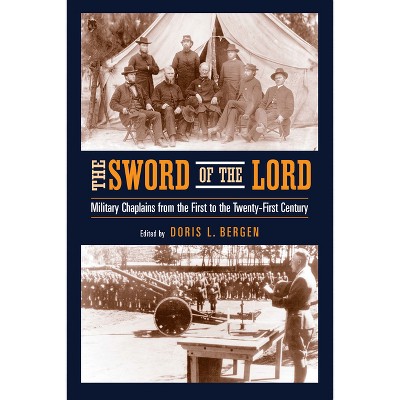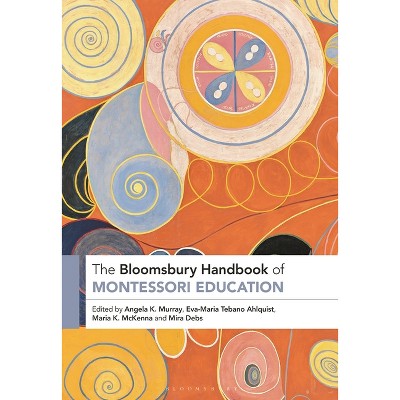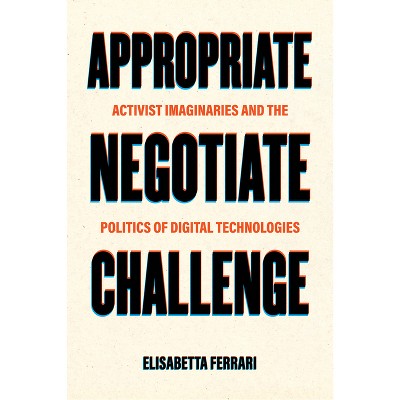Handbook of Developmentally Appropriate Toys - by Doris Bergen (Paperback)

About this item
Highlights
- The handbook is expected to serve both as a reference for educators, parents, toy designers, and other interested readers, and as a catalyst for further research and ongoing toy development.
- About the Author: Doris Bergen, PhD, is a distinguished professor of educational psychology emerita at Miami University, Oxford, Ohio.
- 302 Pages
- Education, Early Childhood (incl. Preschool & Kindergarten)
Description
About the Book
The handbook is expected to serve both as a reference for educators, parents, toy designers, and other interested readers, and as a catalyst for further research and ongoing toy development.Book Synopsis
The handbook is expected to serve both as a reference for educators, parents, toy designers, and other interested readers, and as a catalyst for further research and ongoing toy development.
Review Quotes
Doris Bergen provides practitioners, researchers, families, and community stakeholders with a fascinating edited collection about "toy products" and their developmental appropriateness. Each chapter offers the historical and cultural evolution of various toys as well as their roles related to physical, cognitive, language and moral development. Specifically, the handbook addresses the purposes for and uses of toys in STEM, literacy, and technology augmented programs. The reader friendly style and organization makes this a must read for anyone interested in learning about "toys products" and their purposes.
The Handbook of Developmentally Appropriate Toys, then, should not be read by educators as a recipe book, with simple instructions for one-size-fits-all educational solutions. We should read it, instead, as an atlas, which offers us detailed maps and relevant data of the vast territory that is the world of toys. It is a tool that contains suggestions, recommendations, and examples. But, ultimately, it delegates to our own contextual judgment and expertise the difficult task of deciding what criteria define appropriateness and what approaches are able to encourage forms of developmentally appropriate play.
This book presents a beautifully curated panorama of children's toys. History, culture, gender, and development are thoughtfully woven into each chapter, providing both the research and rich description that brings to life the value of each toy profiled, and toys in general, in children's lives. By cataloging, describing, and reflecting on the meaning of children's play with toys, a theme emerges: children are protagonists in their own learning, and toys belong to children as means of representing, enacting, and learning. Doris Bergen, from her research on the memories of adults about their play states: "They lived in worlds that they designed and ruled, often for many hours at a time, and the adults at that time allowed them the opportunity to control their own imaginative world." (p. 284 of draft) Our responsibility, as educators, parents, and advocates, is to ensure that this element of power, and of the child as protagonist, is not lost, and this book provides the resources to support our work.
This is both a wonderful resource for teachers and parents and a celebration of what makes childhood so joyful--toys. In a single volume, the most important play researchers in the world contribute their insights into the developmental, cultural, and historical meanings of toys. This book will go directly onto our reading list for our early childhood education students.
This new handbook focuses on toys as windows into children's play. Like all good handbooks do, it introduces important fields of research that take the reader to the foundations of all related topics. Bergen, with her wealth of experience in the field, has a thorough knowledge of toys and play. She provides both scholars and teachers with a valuable resource.
What are some of the essential elements that are necessary for a child to become fully and joyfully human? This Handbook convincingly provides the engaging, authoritative comprehensive evidence that toys, in all their historic and current varied forms foster this process. We are all "built to play, and built by play," and the right toys at the right times trigger our intrinsic play natures to the betterment of us all. The current cultural emphasis on virtual play formats and the long term consequences of actual lessened physical interactions is addressed with suggestions for remediation based on credible information about the basics of play as it relates to overall child development.
About the Author
Doris Bergen, PhD, is a distinguished professor of educational psychology emerita at Miami University, Oxford, Ohio. Her research interests have focused on play theory and humor development, including effects of technology-enhanced toys on play, adult memories of childhood play, and gifted children's humor. She also is a Miami University Distinguish Scholar.Shipping details
Return details
Trending Non-Fiction











